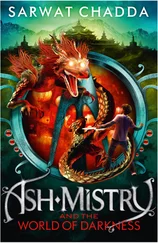Антон Геля - America under enemy rule and the world as it is
Здесь есть возможность читать онлайн «Антон Геля - America under enemy rule and the world as it is» — ознакомительный отрывок электронной книги совершенно бесплатно, а после прочтения отрывка купить полную версию. В некоторых случаях можно слушать аудио, скачать через торрент в формате fb2 и присутствует краткое содержание. Год выпуска: 2019, Жанр: Публицистика, Политика, на русском языке. Описание произведения, (предисловие) а так же отзывы посетителей доступны на портале библиотеки ЛибКат.
- Название:America under enemy rule and the world as it is
- Автор:
- Жанр:
- Год:2019
- ISBN:нет данных
- Рейтинг книги:5 / 5. Голосов: 1
-
Избранное:Добавить в избранное
- Отзывы:
-
Ваша оценка:
- 100
- 1
- 2
- 3
- 4
- 5
America under enemy rule and the world as it is: краткое содержание, описание и аннотация
Предлагаем к чтению аннотацию, описание, краткое содержание или предисловие (зависит от того, что написал сам автор книги «America under enemy rule and the world as it is»). Если вы не нашли необходимую информацию о книге — напишите в комментариях, мы постараемся отыскать её.
America under enemy rule and the world as it is — читать онлайн ознакомительный отрывок
Ниже представлен текст книги, разбитый по страницам. Система сохранения места последней прочитанной страницы, позволяет с удобством читать онлайн бесплатно книгу «America under enemy rule and the world as it is», без необходимости каждый раз заново искать на чём Вы остановились. Поставьте закладку, и сможете в любой момент перейти на страницу, на которой закончили чтение.
Интервал:
Закладка:
Unintended conseqences were: 1) decreased tolerance to cold (which later was compensated by using the clothing and by discovery of fire); 2) minimized opportunities for previous communication ways such as rising fur, which exerted selection pressure to develop other means of communication, such as facial mimic musculature development, speech and skin coloring/tatooing; 3) risk of skin cancer due to the loss of protection by fur, which was compensated about 1.2 mln y.a. by dark skin MC1R mutation. 4) loss of camouflage function of the fur => skin painting/cloth use.
Originally the skin under the fur was gray and pink, after the skin mutation it became dark, when some humans migrated to Asia it got lighter, when some migrated to Europe it became white to absorb UV ray to produce vitamin D. The problem in Africa was too much sun, so the pigment melanin in upper layers of the skin shielded deeper skin. The problem in cold Europe was the lack of sun: cloudy days, warm clothing, long time in a shelter. Children during growth spurt need vitamin D for the bone and skin growth, so the selection pressure was to have very fair skin during 1st 2 years of life (unless drinking vitamin D fortified milk, Europeans need 10 minutes a day sunbathing to produce enough vit. D while blacks need 2 hours. If there would be no vit. D in milk, Afro-Americans in some time would become fair skinned too). When Arian tribes migrated to India from Europe, the natural selection started working in reverse– Hindus have darker skin because those from offspring with darker skin due to natural variability were more likely to avoid skin cancer. Right now Australians have highest in the world skin cancer rate because Europeans came to the tropics. In several generations Australians will have darker skin.
Of course, we retained the hair where it was beneficial for survival to protect large blood vessels: neck, armpits, groin, and possibly to produce pheramons during fertile period and for sexual arousal.
Discovery of fire played huge role in our history because it in significant degree protected humans from the regulation by mother nature. If any other species multiply too much, then ecological self-regulation with feed-back kicks in, resulting in growth of enemies of that species: germs, viruses, parasites. Sterilization of the food on the fire prevented many epidemics that would decimate humans otherwise. That's why majority of us like the thermically processed foods better than the raw ones. Other mechanism of self-regulating the population overgrowth is increased agression and violence which has 2 results: the over-populated species whether kill each other or run away, populating new areas. This mechanism still works alright. Suicide tendency plays insignificant in humans, unlike lemmings and "progressive" liberalism.
Another important period was 195,000 y.a. Our ancestors evolved after the Neandertal men, about 270,000 y.a., and due to the climate change (possible after huge Indonesian volcuno eruption) had to migrate to the shores. During that period selection pressure produced several features: 1) We are the only apes that can hold breath and dive; 2) we are the only apes that are born with swimming skills although if the infant doesn't swim during 1st 6 month of life, then he forgets it; 3) our body biochemistry benefits from the sea food diet: fish, sea weeds, clams (Okinawa diet). (Our 3 features show that humans are not vegetarians but omnivours : we have fangs; both of our eyes focused on the same target in the same direction; we cannot synthesize all necessary nutrients – for example, Vitamin B12 that can be obtained only from animal sources).
During that critical period the food shortage, climate changes and other hardships reduced the first human horde to just 5,000 with significant risk of going extinct, just like many other parallel ancestor lines. However, it was a toss, because with such low number of individuals any mutation, whether detrimental or beneficial, would spread really fast amongst those 5,000 (just compare with todays 6 billions). So, we could whether go under really fast, or adapt to the bad times really fast. We were lucky, we adapted. When the situation with demographics improved, then the horde became too crowded, the tensions started rising and the horde split to several groups. Then some of our ancestors started migrating to Asia and Europe. Europe by then was already populated by another human race– Neandertal men, who were short, sturdy, strong,with thick cold-scratch resistent skin, bigger than ours brain and strong skull, and probably ambidextrous, which is handy in a fight. They had a language, used tools, discovered fire and according to the cave pictures even had some religious beliefs while our ancestors still were apes yet. So, they had a big head up, but in the end they went extinct not long ago. In a fight we would be no match, they could take on rhinos and bears, but we had many other advantages:
1) We had much less ambidexteriority, which means we had asymmetrical brains with well developed and highly efficient specialized speech center, usually in the left lobe and less chance of ADHD/linguistic difficulties, associated with ambidexteriority; 2) We had much ligher skull with big resonating sinuses/cavities, which allowed us to generate many more different sounds to enrich our language; 3) Better speech allowed us to communicate and distribute social functions, especially during the hunt: only men were allowed to hunt, and they had more coordinated efforts due to the better speech, which decreased risk of hunting accidental deaths. Meanwhile Neandertal men were hunting altogether– men, women and children, which understandably lead to frequent deaths of children and women.
4) Our race is better in monkeying than monkeys. During experiment on apes and human children of the same development level, apes were better in finding a solution, but each of them acted alone, they "kept inventing the wheel" again and again, while as soon as one human child made a breakthrough, the rest of them quickly learned the trick. 5) Combined with rapidly developing language, it resulted in much faster information avalanch, in accumulation and passing along to the next generation knowledge, skills and tools. 6) In addition, our strength was in universality and adaptability. Europe then was undergoing 3 successive periods of rapid climate change, from warming to ice age and back. This resulted in many changes in the ecology– Neandertal's favorite hairy rhinos, bears and mammoths became less available, and with poor communication skills they had hard time coordinating efforts and changing hunting practices. Besides, their brown hydes were suited to blend in in a woody areas while during ice age the woods became rare, which added diffuculties to their abilities to hunt small game in open. Finally, the glaciers divided Europe's Neandertals into 3 separate groups, which resulted in inbreeding, reduced genetic diversity and adaptability, and finally in extinction. Last ones died in a Gibraltar cave when our race has already started building huts. It looks like they were much less aggressive, adventurous and resourseful, than our ancestors: from Gibraltar they could easily swim on a log to Africa, away from the ice age, but they didn't. Probably, genetically they were far enough from us to lose ability to breed with our ancestors, so they disappear completely.
Our brains as a product of natural selection have several important features:
1) We are prone to pseudo-pattern recognition . Let's say, there's a log on a trail, or a sun spots on a bush, but we might see a tiger or a panther where there is none. If there is no predator, and we combine in our imagination all these spots as a pieces of puzzle into a predator, then we don't lose our lives. On other hand, if we miss a real predator– we're dead. So, the natural selection pushes towards "hyperdiagnosis"– stuff like "you can't be too cautious" and "better to be safe than sorry". Probably, it is the psychophysiological basis for establishing a religion – we see a pattern where it doesn't exist. However, religion apparently offers societal advantages too, so it has to have societal basis too, otherwise we wouldn't see the appearance of religions in every society since the stone ages. Similar trend is called by other scientists "a grouping", or "obsessive desire to make whole object from fragmentary evidence", as Ramachandran and Rogers put it. These property are planted in our brain by the evolution since they had some survival benefits. We'll discuss some aspects of the role of religion in society in later chapters, although within a very narrow scope just as applicable to our topic.
Читать дальшеИнтервал:
Закладка:
Похожие книги на «America under enemy rule and the world as it is»
Представляем Вашему вниманию похожие книги на «America under enemy rule and the world as it is» списком для выбора. Мы отобрали схожую по названию и смыслу литературу в надежде предоставить читателям больше вариантов отыскать новые, интересные, ещё непрочитанные произведения.
Обсуждение, отзывы о книге «America under enemy rule and the world as it is» и просто собственные мнения читателей. Оставьте ваши комментарии, напишите, что Вы думаете о произведении, его смысле или главных героях. Укажите что конкретно понравилось, а что нет, и почему Вы так считаете.












